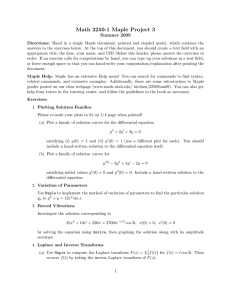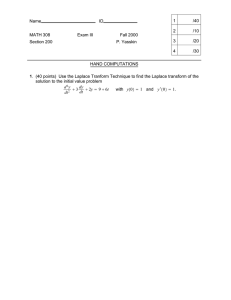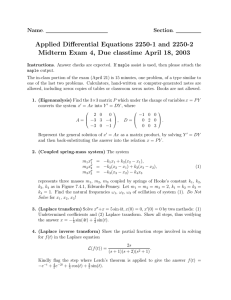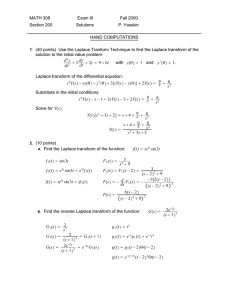Math 2280-1 Maple Project 4 Summer 2010
advertisement
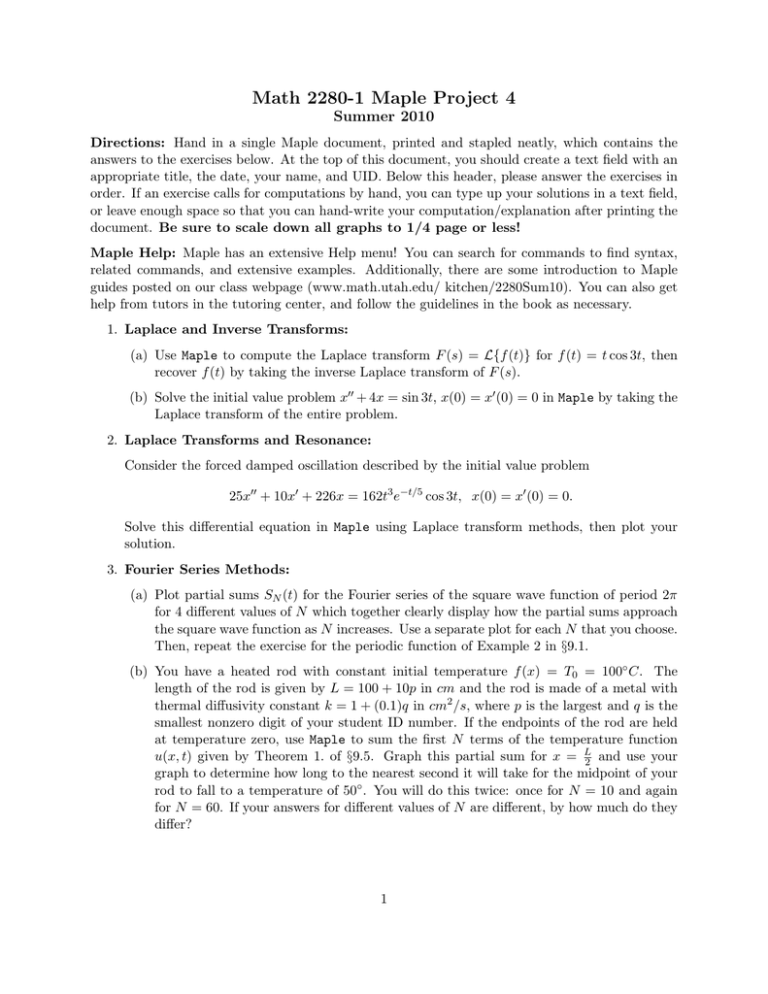
Math 2280-1 Maple Project 4
Summer 2010
Directions: Hand in a single Maple document, printed and stapled neatly, which contains the
answers to the exercises below. At the top of this document, you should create a text field with an
appropriate title, the date, your name, and UID. Below this header, please answer the exercises in
order. If an exercise calls for computations by hand, you can type up your solutions in a text field,
or leave enough space so that you can hand-write your computation/explanation after printing the
document. Be sure to scale down all graphs to 1/4 page or less!
Maple Help: Maple has an extensive Help menu! You can search for commands to find syntax,
related commands, and extensive examples. Additionally, there are some introduction to Maple
guides posted on our class webpage (www.math.utah.edu/ kitchen/2280Sum10). You can also get
help from tutors in the tutoring center, and follow the guidelines in the book as necessary.
1. Laplace and Inverse Transforms:
(a) Use Maple to compute the Laplace transform F (s) = L{f (t)} for f (t) = t cos 3t, then
recover f (t) by taking the inverse Laplace transform of F (s).
(b) Solve the initial value problem x00 + 4x = sin 3t, x(0) = x0 (0) = 0 in Maple by taking the
Laplace transform of the entire problem.
2. Laplace Transforms and Resonance:
Consider the forced damped oscillation described by the initial value problem
25x00 + 10x0 + 226x = 162t3 e−t/5 cos 3t, x(0) = x0 (0) = 0.
Solve this differential equation in Maple using Laplace transform methods, then plot your
solution.
3. Fourier Series Methods:
(a) Plot partial sums SN (t) for the Fourier series of the square wave function of period 2π
for 4 different values of N which together clearly display how the partial sums approach
the square wave function as N increases. Use a separate plot for each N that you choose.
Then, repeat the exercise for the periodic function of Example 2 in §9.1.
(b) You have a heated rod with constant initial temperature f (x) = T0 = 100◦ C. The
length of the rod is given by L = 100 + 10p in cm and the rod is made of a metal with
thermal diffusivity constant k = 1 + (0.1)q in cm2 /s, where p is the largest and q is the
smallest nonzero digit of your student ID number. If the endpoints of the rod are held
at temperature zero, use Maple to sum the first N terms of the temperature function
u(x, t) given by Theorem 1. of §9.5. Graph this partial sum for x = L2 and use your
graph to determine how long to the nearest second it will take for the midpoint of your
rod to fall to a temperature of 50◦ . You will do this twice: once for N = 10 and again
for N = 60. If your answers for different values of N are different, by how much do they
differ?
1
